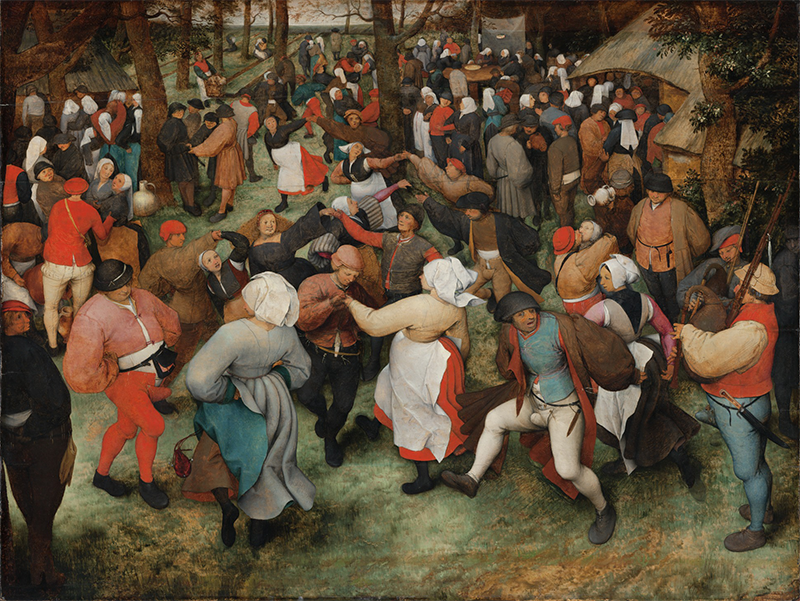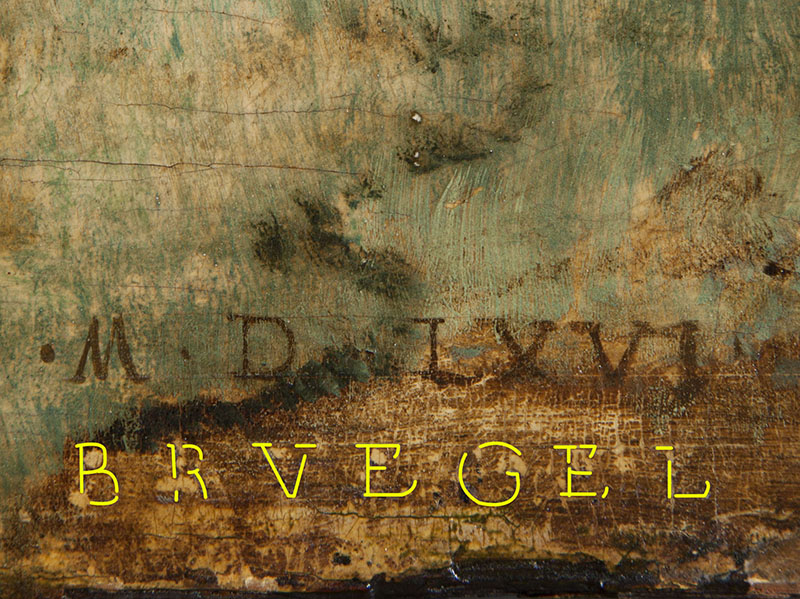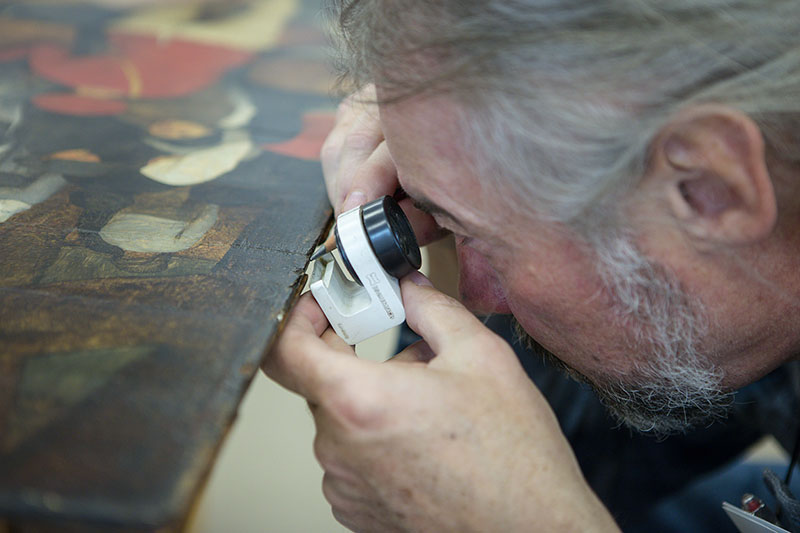
Pieter Bruegel the Elder’s Wedding Dance (1566) is the subject of a newly opened dossier exhibition at the Detroit Institute of Arts that explores recent discoveries made by the museum’s conservation team and European art department.
In 2015 the painting, one of the most popular in the DIA collection, was taken off the wall for two weeks and put through a battery of tests, including ultraviolet, infrared, and high-resolution imaging. “What I discovered in the bottom right corner was the remnant of a signature,” says Aaron Steele, imaging specialist at the DIA and co-curator of the exhibition. It was the name of the painter, abraded by centuries of wear from an ill-fitting frame.

More revelations awaited, including that the plank supporting the top 2 ½ inches of the painting—accommodating the scene’s horizon—hadn’t been part of the original composition. Missing from that portion are the underdrawing found elsewhere in the scene, and it also includes unusual pigments, such as a lead tin yellow that fell out of favor around 1750, dating the plank to sometime before that date.
What explains the addition? “Maybe it was for comfort,” theorizes Ellen Hanspach-Bernal, conservator of paintings at the museum and co-curator of the exhibition. “Paintings from the period usually had landscape views in the distance.” Bruegel’s composition, angled downward into a whirling throng of 129 peasant dancers, might simply have been too busy for Renaissance-era viewers.

These and other findings are detailed in an exhaustive report for DIA’s 2019 bulletin. Visitors to the museum will be able to enjoy The Wedding Dance like they never have before—unframed and mounted in a case that provides a view of it in the round—and peruse materials such as telegrams sent by museum director William Valentiner from Europe at the time of the painting’s acquisition in 1930, and pigments and tools of the sixteenth century Flemish painting trade.
Bruegel’s “The Wedding Dance” Revealed • Detroit Institute of Arts • to August 30, 2020 • dia.org
